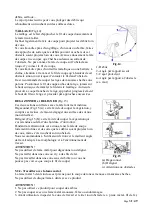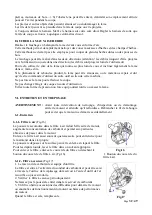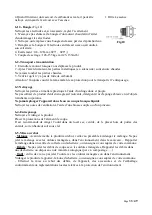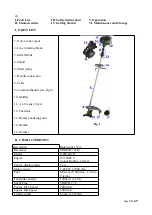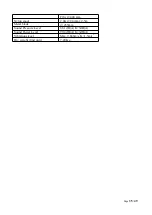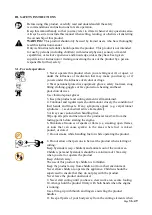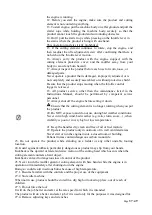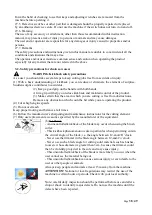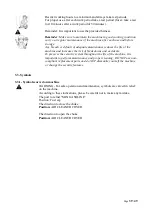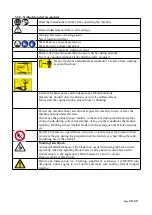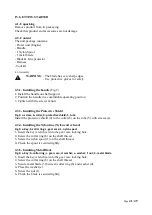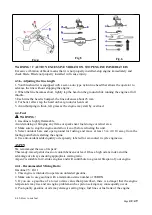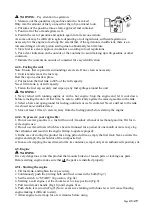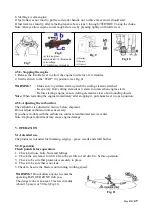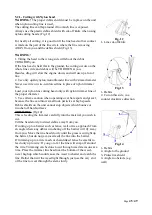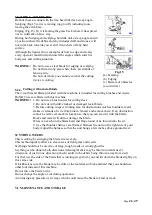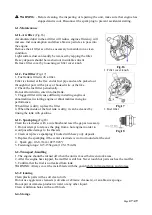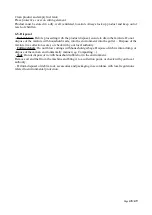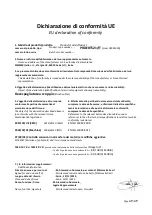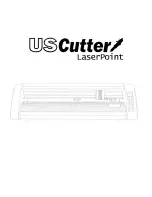
5.2.1- Cutting with Nylon head
WARNING!
The proper debris shield must be in place on the unit
when nylon cutting line is used,
The cutting line can flap around if too much line is exposed.
Always use the plastic debris shield with cut-off knife when using
nylon cutting heads. (Fig.12)
For nearly all cutting, it is good to tilt the line head so that contact
is made on the part of the line circle where the line is moving
AWAY from you and the debris shield (Fig.13).
Fig. 12
1- Line cut-off knife
WARNING
!
1. Tilting the head to the wrong side will shoot the debris
TOWARDS you.
If the line head is held flat to the ground, the cutting occurs on the
whole line circle and debris will be THROWN at you.
Besides, drag will slow the engine down, and will use up a lot of
line.
2. Use only quality nylon monofilament line with 2,4mm diameter.
Never use wire or wire-reinforced line in place of nylon trimmer
line.
Load your nylon line cutting head only with nylon trimmer line of
the proper diameter
3. Use extreme caution when operating over bare spots and gravel,
because the line can throw small rock particles at high speeds.
Debris shields on the unit cannot stop objects which bounce or
ricochet off hard surfaces
Fig.13
1- Debris
2- Cut on this side, in a
counter clockwise direction
TRIMMING
(Fig.14)
This is feeding the trimmer carefully into the material you wish to
cut.
Tilt the head slowly to direct debris away from you.
If cutting up to a barrier such as fence, wall or tree, approach from
an angle where any debris ricocheting off the barrier will fly away
from you, Move the line head slowly until the grass is cut right up
the barrier, but do not jam (overfeed) the line into the barrier.
If trimming up to a wire mesh or chain linked fence be careful to
feed only up to wire. If you go to far the line will snap off around
the wire. Trimming can be done to cut through weed stems one at a
time. Place the trimmer line head near the bottom of the weed-
never high up which could cause the weed to chatter and catch the
line. Rather than cut the weed right through, just use the very end
of the line to wear through the stem slowly.
Fig.14
1- Debris
2- Angle to the ground
3- Protective shield
4- Angle to obstacle (e.g.
wall)
Page
45
/
49

